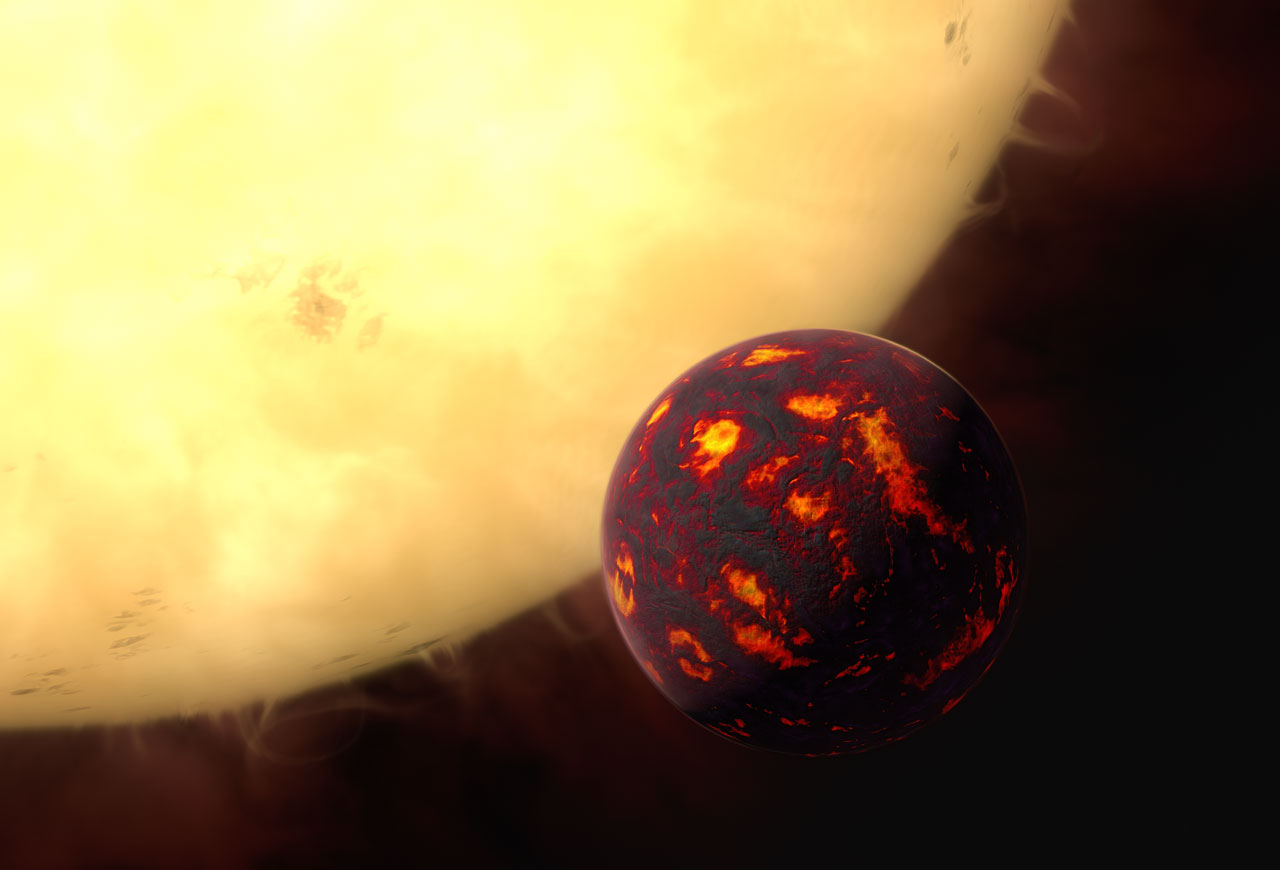Imagine a scorching hot, rocky world, bathed in the relentless radiation of its nearby star. This isn’t science fiction; it’s the reality of 55 Cancri e, a fascinating exoplanet recently studied using the James Webb Space Telescope (JWST). But 55 Cancri e holds a surprising secret – it appears to have a thick atmosphere, despite the harsh conditions.
A Diamond in the Rough: Unveiling the Super-Earth’s Composition
Located roughly 41 light-years away, 55 Cancri e is a super-Earth, significantly larger and more massive than our own planet. Astronomers believe it may be composed mostly of carbon compressed into diamond due to its immense pressure. This theory is based on the planet’s density, which is much higher than what would be expected for a rocky world solely composed of silicate materials. However, its defining characteristic is its proximity to its sun-like star, 55 Cancri A. Orbiting at a distance just over a hundredth of that between Earth and the Sun, 55 Cancri e endures scorching surface temperatures exceeding 4,400 degrees Fahrenheit (2,400 degrees Celsius).
A Stolen Atmosphere and an Unexpected Recovery: The Stellar Tug-of-War
The intense radiation from its star would be expected to strip away any atmosphere 55 Cancri e might have possessed. This is a common scenario for rocky planets orbiting so close to their stars. The relentless stream of photons acts like a cosmic wind, gradually eroding the planet’s atmosphere over time. However, new evidence from JWST suggests a thick layer of gas now surrounds the planet, indicating the presence of a secondary atmosphere. This discovery challenges our understanding of how planets orbiting so close to their stars can retain or reacquire an atmosphere.
Theories Behind the Regrown Atmosphere: A Molten World’s Outgassing
Scientists believe they may understand how 55 Cancri e acquired this new atmosphere. The intense heat likely keeps the planet’s interior molten, creating a vast ocean of lava. This molten surface acts as a reservoir for gases, which continuously bubble out and replenish the atmosphere through a process called outgassing. The original atmosphere, likely composed primarily of hydrogen and helium, is thought to have been lost to stellar radiation long ago. The composition of this secondary atmosphere remains uncertain, but models suggest it may be dominated by carbon dioxide and carbon monoxide, potentially creating a thick and opaque layer.
Uniquely Positioned for Atmospheric Revival: Size Matters in the Dance with Radiation
While 55 Cancri e isn’t the only scorching hot, rocky planet known, its size may be a key factor in its ability to regrow an atmosphere. At nearly twice the diameter of Earth, 55 Cancri e possesses significant mass, allowing it to retain volatiles – elements and compounds that are easily vaporized – that might otherwise be lost to stellar radiation. This suggests that a planet’s size, in addition to its distance from its star, may play a crucial role in its ability to maintain or reacquire an atmosphere. Smaller, less massive planets orbiting close to their stars may be more susceptible to complete atmospheric loss.
Future Observations: Unveiling the Mystery of a Gaseous Shroud
The JWST observations have opened a new chapter in our understanding of 55 Cancri e. Further studies are planned to analyze the planet’s thermal emissions not only during eclipses but also throughout its orbit. This will provide valuable insights into the size and circulation patterns within the atmosphere. By analyzing these patterns, scientists can potentially determine the dominant atmospheric gases and their relative abundances. Additionally, studying the variations in thermal emission across the planet’s surface may provide clues about the presence of heat redistribution mechanisms, which could help regulate the scorching temperatures.

The discovery of a secondary atmosphere on 55 Cancri e highlights the remarkable diversity of exoplanets and the complex processes that shape their atmospheres. This newfound knowledge will undoubtedly guide future exoplanet research as we continue our quest to understand these distant worlds. It compels us to re-evaluate our understanding of atmospheric formation and stability around stars, and opens exciting possibilities for uncovering new classes of exoplanets with unique atmospheric properties.


















